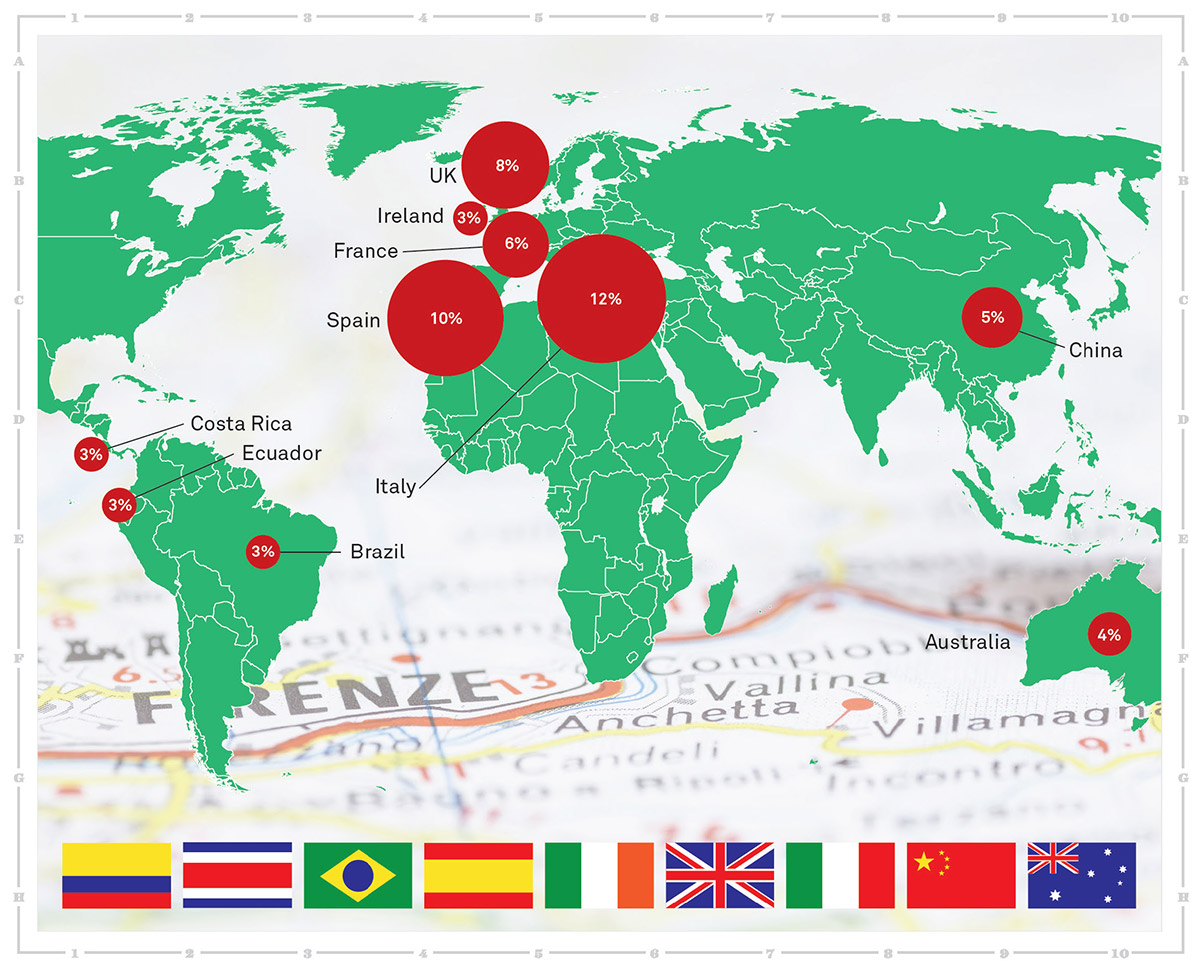
Top 10 Study Abroad Destinations for UW–Madison Students, 2013–14. Background Image, Shutterstock/Gr Italian Photographer; World Map, Istock; Photo Illustration, Danielle Lawry
From Italy to Iceland and from China to Cape Verde, Badgers are studying abroad in record numbers.

Dan Gold, director of International Academic Programs, says his office awarded scholarships to 269 students this year; 40 percent targeted students from groups who don’t typically study abroad, including first-generation college students.
Nearly 30 percent of UW–Madison students who earned bachelor’s degrees in 2013–14 went overseas, a rate three times the national average.
A total of 2,276 undergraduate and graduate students studied in more than seventy countries on six continents during that time period. Half of them took part in semester-long or full-year programs, while the rest chose from shorter offerings over winter, spring, or summer breaks. Students majoring in business, Spanish, political science, and biology made up the largest portion of UW students who went abroad.
Two-thirds of students who study abroad say they do so to improve their chances in the job market after graduation, says Dan Gold, director of International Academic Programs, who first studied abroad in Finland as a high school exchange student. “One of the things that has changed, especially with the interconnectedness and globalized nature of today’s world, is [that] such experiences are important for every student,” Gold says.
“Study abroad has always been recognized by faculty and staff and students here as being a really critical experience,” he adds. “We have programs that are over fifty years old.”
Gold credits the longevity and variety of programs — more than two hundred — for the high participation rate. The most popular destinations for UW students — and students nationally — are Italy, Spain, the United Kingdom, France, and China. Gold says those choices have as much to do with the quality of those programs as their location or culture.
“We’re trying to shift students to think about not where you want to study, but what do you want to study,” Gold says.
Published in the Spring 2016 issue



Comments
No comments posted yet.